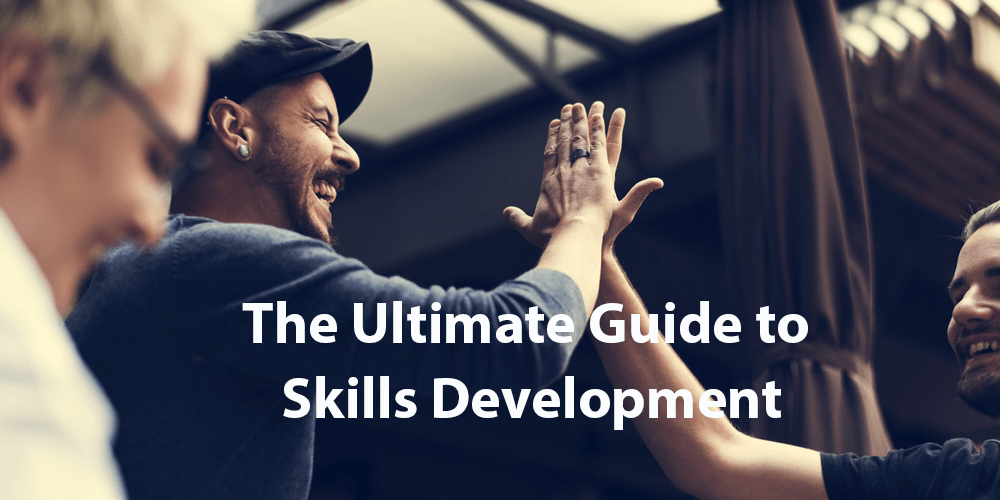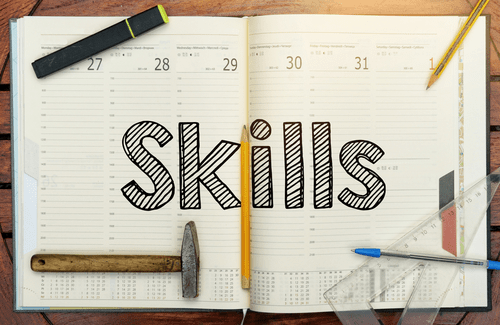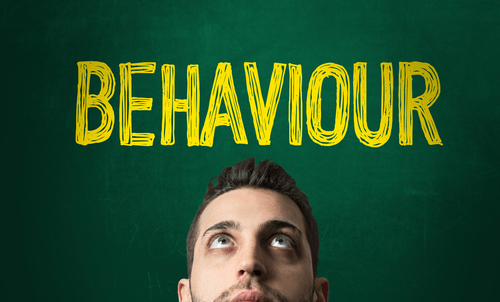- in Blog , Features & Articles by David Wilkinson
- |
- 3 comments
The Ultimate Guide to Skills Development – Many Learning and Development ‘professionals’ don’t understand how to develop skills…

The Ultimate Guide to Skills Development
There is a bit more to skills development than just practice. This Oxford Review guide to developing skills in organisations will lead you through just about everything you need to know to become an ace at skills development.
Following on from my last post two posts:
Why many people’s idea about how we learn is just plain wrong
and
At what point can you say you have learned something?
I now want to turn my attention to skills development, the second of the three domains of learning.
As mentioned in Why many people’s idea about how we learn is just plain wrong Bloom, whose categorisation of learning (called the taxonomy of educational objectives) is the basis of most of the western (higher) educational system, proposed that there are three learning systems.
- Cognitive
- Psychomotor – This guide
- Affective
I covered the traps many educators and development professionals fall into with cognitive development in Why many people’s idea about how we learn is just plain wrong. The problem lies in in the fact that Bloom was describing levels of learning not how we learn.
Skills development
The essence of skills development is the process of becoming more effective and efficient (faster, more precise, more contextually aware, etc.) at a task or set of tasks. To become more skilful.
Be impressively well-informed
Get your FREE organizational and people development research briefings, infographics, video research briefings, a free copy of The Oxford Review and more...
The psychomotor domain
The same issue applies to his psychomotor domain, however there are other deeper issues with skills development that many human development (L&D and educator) professionals don’t really understand.
The point Bloom was trying to make was that learning and teaching/coaching/tutoring in any domain should be aimed at helping the learner to master their abilities with knowledge, thinking, skills and control over their own emotions, beliefs and values. He was trying to get away from the idea of ‘shallow’ learning or a situation where teachers/trainers etc. think they have done their job simply by presenting information.
When you look at many L&D programmes, workshops and even coaching events it makes you wonder, given that this work was done in the 1940’s and 50’s, what progress has actually been made.
The first issue with Bloom’s psychomotor domain was that it was largely only sketched out and was unfinished at his death. As a result it wasn’t very useful. Bloom had arrived at three levels of psychomotor development when he died:
- Competency
- Proficiency
- Mastery
This in itself isn’t that useful beyond describing a progression of skill and the fact that we are aiming for mastery, a place where the skill is instinctual.
Since Bloom a number of people have further developed this domain. Probably the most used framework is what is called the Dave version of the psychomotor domain, named after one of Bloom’s students R.H. Dave. This comprises
- Imitation – copying an instructor or other skilled person
- Manipulation – reproducing the actions from memory
- Precision – Becoming reliable and building speed and precision
- Articulation – Being able to adapt and fit the skills to a new context
- Naturalisation – This is similar to the process of characterisation I mentioned in At what point can you say you have learned something?. This is the point at which the skill becomes instinctual and you do it without thinking.
Basically what we have here is a ‘see-try-do’ process.
Other less well known skills taxonomies
Simpson’s psychomotor taxonomy:
- Perception – Awareness that something new needs to be done that they haven’t done before
- Set – Becoming ready
- Guided response – being instructed
- Mechanism – learning the basics of the skill
- Complex overt response – Becoming more expert
- Adaption – learning to adapt the response in new situations
- Origination – creating new responses
The issues I have with this is that not all skills development is guided, many of our skills are self taught and that we are often creating new responses (shortcuts) even before we have embedded the original skill.
Harrow’s psychomotor taxonomy
- Reflex – instinctual and involuntary reaction to the situation or stimulus/trigger
- Basic movements – really simple actions
- Perceptual abilities – simple perception of the context and when to do what
- Physical abilities – having the skill or fitness to carry out the operation
- Skilled movements – More refined and expert actions
- Non-discurvie communication – creates and communicates meaning through their actions
I have to say Harrow’s taxonomy feels more like it was done on the back of an envelope.
Now obviously any skills development requires practice, particularly if the individual is to get good (proficient) at the skill. There are however a few problems that these and many other skills development frameworks fail to address like how. How do you move from one state to another? Does practice alone create this movement?
There are a few issues that need to be considered with skills development…
Skills come from 4 things:
Skills are the culmination of four things:
- Capability – are they physically, emotionally or intellectually able to do this thing?
- Ability – Do they have the expertise and practice required to carry out the task at the level of difficulty or complexity it exists in?
- Motivation – Do they want to do the task?
- Provocation – Do they know when and how to start doing or active the skill or behaviour. This is the trigger.
Complexity and capability
The first is that there are different levels of complexity of skill that this does not address. Learning to drive and learning to pilot a jet fighter are two very different levels of complexity. And whilst they still follow a ‘see-try-do’ methodology, not everyone will be able to master the skills required. Think for example about the people who pass their driving test first time and with ease and those who have tried twenty and even thirty times and still fail. So at one end of this equation is the level of complexity of the task and at the other is the ability of the individual. Not everyone is capable of everything.
This is an issue of capability and skilfulness vs difficulty and complexity of the task or behaviours the individual is developing.
Context
Context matters. Years ago I was in the Army and then the police. Both services place a lot of emphasis on training (skills development). You aren’t allowed out of training until you have a basic level of competency, because the consequences of failure are severe and frequently fatal. However, formal ‘in school’ training is not enough. In the Army, for example, I witnessed a number of ’trained’ soldiers freeze or do the wrong thing under fire. Likewise, I witnessed ’trained’ police officers ‘losing it’ in a live brawl or a riot situation. For this reason, the services and emergency services place newly trained personnel on probation, in the case of the police in the UK for two years, during which time they are meant to be under the continual tutelage of an experienced tutor officer.
This extended training is for three reasons. The first is the complexity of many of the tasks requires a range of different responses. These are not simple psychomotor tasks but complex shifting tasks that require complex combinations of knowledge, thinking skills, beliefs, judgement, emotion regulation, attitude and contextual sensitivity or the ability to read the situation, often in high stress predicaments.
Whilst many jobs aren’t as acute as the armed services or emergency services, all of these factors still apply in many of them.
Developing the skills in context is vital.
Feedback
The next thing that skills development requires is feedback. Whilst this may appear obvious, there are some issues about feedback that are less obvious and frequently not understood.
Skills development is not just about getting feedback from experienced practitioners. Rather it is about developing the environmental and contextual sensitivity to notice, get and act on feedback from the environment and context. For example, the reactions of others to their actions is good feedback. Developing this level of adjunct skill is both necessary and usually ignored in the skills development arena.
Flexibility and adaptation – training for failure and change
The next area skills development programmes almost always omit is to help the learner develop the skill of judgement. To know when the skills developed no longer apply, either because of change or because of contextual limitations. Many skills development processes end at developing the skill, rather than helping the learner to plan for failure. At some stage the skills will fail or will not be relevant or applicable as things change. There is no plan for irrelevance. The consequence of this is that people keep applying the same old thinking and skills, even in the face of overwhelming evidence that change has occurred.
Examples of training for failure: In the military a lot of training time is spent on failure training. For example soldiers are taught what to do if their weapon fails or they get a blockage.
In the police, whilst I was undergoing advanced driving instruction, a significant proportion of the police advanced driving course is spent on a skid pan, firstly learning how to correct a skid under numerous conditions, then in different types of vehicles; front wheel drive, rear wheel drive, four wheel drive, automatic, manual etc., as every type of vehicle has different characteristics in a skid and requires different actions.
Not only that, but part of the police advanced driving test is on the skid pan in each type of vehicle and includes car control, anti-skid manoeuvring and finally, to show complete mastery, there is a pursuit chase where you have to stay between half to one and a half car lengths behind another car being driven by an instructor as they try to escape spinning across the skid pan.
Not all skills are psychomotor
Bloom and those that followed him have focused on psychomotor skills by which people assume are physical skills like driving, playing football, operating machinery. However there are many other sets of skills that are not psychomotor. For example:
- Olfactory skills (smell)
- Auditory skills (hearing)
- Tactile skills (touch)
- Visual skills (seeing)
- Gustatory skills (taste)
- Cognitive skills (thinking, reasoning, recognition, discernment, creativity and awareness)
- Affective or emotional skills (being able to recognise, identify and change our own and others emotions at will)
Many skilled individuals combine a series of skill sets to do what they do.
Why practice is everything but it isn’t enough
Any skill needs practice. Even simple skills like drinking, walking or talking required continued practice and feedback, often over many years. At the heart of skills development in any area is repeated practice.
Practice on its own, however, does not necessarily mean that an individual will develop and hone their skills. If they keep doing the same thing, don’t learn and don’t adapt to feedback, they are unlikely to progress with skills development.
Skills development is primarily a change issue. As you learn to adapt and change what you are doing, you move from failure to success.
Without feedback, motivation and persistence (particularly in the face of failure) mastery of a skill is not going to occur. As mentioned above, feedback not only needs to come from other skilled practitioners or a skilled coach (think about any sports personality), but the individual or team/group needs to use environmental cues as feedback- what messages are they noticing – and this requires the honing of awareness and perceptual skills. They first have to learn to see the signs, notice the feedback. Then they have to learn how to act on it in ways that are healthy and productive.
Perceiving feedback and learning to act on it and importantly, create and test new methods, is in itself a set of skills that is developed over time.
Motivation and persistence
As noted above not all skills are equal. There are more complicated sets of skills than others. The more complicated or harder the skill set the more motivation or drive will be needed. The harder and more complex the skill is to develop the more likelihood there is of failure and repeated failure. Success in skills development under these conditions requires persistence and good feedback, often with some form of coach or mentor. This often requires resilience and grit, the ability to keep going, keep trying, keep failing and still maintain the drive to succeed.
Triggers
Three things need to come together for a skill to be used or a behaviour to occur (Fogg 2009):
- Motivation
- Ability, and
- A trigger
The trigger tells the skilled practitioner when to do certain things. For example a skilled driver knows when to change gear usually based on the engine noise or level of vibrations (particularly if the driver is deaf. Skills acquisition
Sometimes you can’t imitate
Sometimes you can’t start by imitating someone else who can do the skill. It is ideal if you can, assuming they are good and here’s the rub. If you aren’t skilled yourself how do you know who is good and who isn’t?
If there isn’t anyone around to imitate or coach you then you are down to good old trail and error, to developing your own way. Whilst this can take longer it is also entirely possible that you may invent a new and even better way of doing something. Of course it is also entirely possible that you will invent a worse, less effective and efficient way of doing something as well.
Skills development, behaviour change and habits
Developing skills and changing behaviours and habits are the same thing. For some reason many people separate these two things. If someone isn’t behaving in a way you need them to they either don’t have the skills (motivation, ability or capability) or they are stuck in a habit. Behaviour and habits change is a skills issue. They still need the capability, ability, motivation and provocation to change and do something differently.
The thing with habits is that that they are often largely unconscious, characterised or automatic behaviours. In effect they are an ingrained skill. They may not be the skill you want but they are a skill. Yes smoking, drinking, drugs they all have capability, ability, motivation and provocation.
This brings me to another issue….
Skills, behaviour and habit change or acquisition don’t occur in a vacuum. Firstly there will be pre-existing:
- thoughts
- perceptions
- skills
- habits
- behaviours and importantly
- emotions.
Additionally new thoughts, skills, perceptions, habits, behaviours and emotions will be created during the skills development process. These all have an impact on the speed, accuracy and flow of the development process.
Teams and groups
The idea behind a good team is that a group of people acting in concert can bring a wider range of skills and skills consistency together to bear upon a problem. It is necessary that the skills in a group are coordinated and that the skills represented in the group are pertinent to the task at hand. The intention being that when you have more than one person they cover for each others weaknesses. However rather than being a collective of strengths, if not composed and managed (based on feedback) correctly, it becomes a collective of weaknesses.
Conclusions
There are a number of takeaways from all this:
- Skills development is more than practice. You also need:
- Persistence and motivation
- Perception – To build the skills of perception to get feedback from the environment
- A trigger or know when to take what action and in what order
- And practice with feedback
- Skills are not just psychomotor. The areas of skills development include and often involve a mixture of development in the following areas:
- Olfactory skills (smell)
- Auditory skills (hearing)
- Tactile skills (touch)
- Visual skills (seeing)
- Gustatory skills (taste)
- Cognitive skills (thinking, reasoning, recognition, discernment, creativity and awareness)
- Affective or emotional skills (being able to recognise, identify and change our own and others emotions at will)
- You also need to think about, plan and train for failure and change. What happens when for example the skills you are developing don’t work anymore or the context changes?
- Practice makes perfect, but it also locks you in. Train to be adaptable as well.
- Practise in the context the skill is needed.
- Try new things and create new ways of doing things (unless someone’s life depends on it). You never know.
- Skills development and behaviour/habit change are the same things.
- Skills development doesn’t occur in a vacuum. Pre-existing and developing thoughts, skills, perceptions, habits, behaviours and emotions can all either slow down skills development or help it. Don’t ignore them.
References
Bennett, N., Dunne, E., & Carré, C. (2000). Skills Development in Higher Education and Employment. Taylor & Francis, Inc., 7625 Empire Dr., Florence, KY 41042.
Bloom, B. S., & Committee of College and University Examiners. (1964). Taxonomy of educational objectives (Vol. 2). New York: Longmans, Green.
Dave, R.H. in Armstrong, R. J.(ed) (1970). Developing and Writing Behavioral Objectives. Tucson, Arizona, USA; Educational Innovators Press
Delaney, Y., Pattinson, B., McCarthy, J., & Beecham, S. (2017). Transitioning from traditional to problem-based learning in management education: the case of a frontline manager skills development programme. Innovations in Education and Teaching International, 54(3), 214-222.
Fogg, B. J. (2009, April). A behavior model for persuasive design. In Proceedings of the 4th international Conference on Persuasive Technology(p. 40). ACM.
Harrow, Anita J. A taxonomy of the psychomotor domain: A guide for developing behavioral objectives. Addison-Wesley Longman Ltd, 1972.
Hazucha, J. F., Hezlett, S. A., & Schneider, R. J. (1993). The impact of 360‐degree feedback on management skills development. Human Resource Management, 32(2‐3), 325-351.
Simpson, E. (1972). The psychomotor domain. Washington DC: Gryphon House.
Be impressively well informed

Get the very latest research intelligence briefings, video research briefings, infographics and more sent direct to you as they are published
Be the most impressively well-informed and up-to-date person around...








Human Resource is the most important asset of an organization. With good HR and constant HR development, an organization can build itself in the best possible way. TANGENT provides complete assessments of HR and necessary training for skill and mental development. https://www.tangent.com.pk/training-development-hr
2accordant
David, I work with Bloom & Krathwohl; perhaps you’d care to know what went on with continual updating of the three TEO domains during the last 60+ years within that specific set of learning networks..?